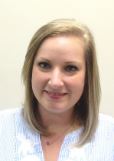CSP Team Note: This post was originally published on Novant Health’s Healthy Headlines. We thank them for allowing us to share it with you. To subscribe to Novant Health’s Healthy Headlines newsletter, click here. Click here to find a physician.
I walked into my local grocery store recently and stepped into a scene I’ve never witnessed before: an argument between a shopper and an employee over how the carts were being cleaned. The employee, wielding a nondescript bottle that sprayed a clear solution, was using it to wipe down cart handles. The shopper grabbed one of those carts and started cleaning it herself.
“I already cleaned that one,” the employee said. I snuck by and headed for the wipes stationed at the entry. “I can see that,” she shot back. “But I’d like to clean my own.”
The introduction of COVID-19 has created unsettling circumstances. Tensions are high, and it’s important to disinfect surfaces to help prevent the spread. But it’s also important to know the facts. Here’s what you need to know.
Don’t underestimate the basics.
Amy Braden, a Novant Health infection preventionist based in Winston-Salem, focuses on ways to prevent the spread of communicable diseases. “The thing everyone can do to protect themselves the most is hand hygiene,” she said. “Wearing a mask and keeping social distance are up there in importance when it comes to Covid-19, but we still have a whole lot to learn.”
Know the difference between cleaning, disinfecting and sanitizing.
When it comes to these three terms, it’s not just semantics. They’re each distinct methods of removing germs, dirt and impurities from surfaces or objects. Braden explains it like this:
– Cleaning is the physical process of removing dirt, germs, viruses and bacteria, typically using soap and water. While it doesn’t necessarily kill germs, by removing them from surfaces and objects – including hands – you lower the risk of spreading infection.
– Disinfecting uses chemicals to kill germs. While it doesn’t necessarily clean dirty surfaces or remove germs, it kills germs and can lower the risk of spreading infection.
– Sanitizing is removing and lowering numbers of germs to a safe level, as judged by public health standards.
For most of us, sanitizing, which is more about reducing the number of germs, rather than killing all of them, is the sweet spot. “We don’t need perfectly disinfected houses,” said Braden. “We just need to remove the bulk of germs so that when we’re going about our daily lives, we don’t have as many risk factors for getting communicable infections.”
For routine household needs, using a disinfectant is most important for bathrooms; kitchens where raw meat is handled, prepped or cooked; and places of frequent contamination, such as doorknobs and keys, Braden said. When a member of the household is sick, using a disinfectant is useful for all surfaces an individual may have contaminated with their germs.
When talking with the public about preventing infection, Braden recommends a few things.
Purchase approved ingredients.
With thousands of products available, it’s hard to know if you’re making the right choices when it comes to cleaning agents that protect against the spread of COVID-19. As a guide, consult the EPA’s extensive list of approved products. Each label will include a distinct registration number (EPA Reg. No.) and will provide instructions (some solutions may need to sit on the surface for a period of time before being removed.) Note: We tried the link above on a generic brand of disinfecting wipes we found at a Charlotte grocery store and it worked. It listed a “contact time” of 10 minutes, which meant the surface needs to remain wet from the wipe for maximum effectiveness. But most of us aren’t going to leave a surface wet for 10 minutes. The important thing is to wipe the surface with the cleaner and use good hand hygiene, Braden said.
Many products claim to kill cold and flu viruses on hard, nonporous surfaces. While that may be the case, “only chemicals that are sold and approved by the EPA, which regulates disinfectants, have been proven in a lab and approved by the EPA,” Braden said.
Wearing gloves? Consider cross-contamination.
We see a lot of people wearing gloves in public. “But if you just picked up a gallon of milk and answered your phone, you have just contaminated it,” said Braden. “So even if you wash your hands, now the phone is contaminated.” This is what infectious disease specialists call indirect contact, and wearing gloves, Braden fears, can provide shoppers with a false sense of safety.
Wash your phone often.
“Washing our phones is very important because they’re practically a third hand,” said Braden. And always clean frequently touched surfaces, like doorknobs, light switches, countertops, handles, keyboards, toilets and sinks.
Can’t find cleaner? Make your own.
As we all know, the store shelves are stocked with fewer disinfectants, but consider an at-home solution. “Bleach is an amazing disinfectant,” said Braden. And you can easily mix your own. The CDC recommends mixing one-third cup of bleach with one gallon of room-temperature water.
Braden also makes her own disinfectant wipes by cutting paper towels in quarters and saturating them in 70% rubbing alcohol, which is also a disinfectant. Pack them in zip baggies and grab as needed.
Really, it’s all about mitigating as much risk as we can, when we must go out, but still staying home, according to Braden. “Even if your risk is very low, it’s a probabilities game. The goal is to eliminate as many opportunities to risk contact as possible.”
Novant Health
Healthy Headlines
Facebook
Instagram
Twitter
YouTube





